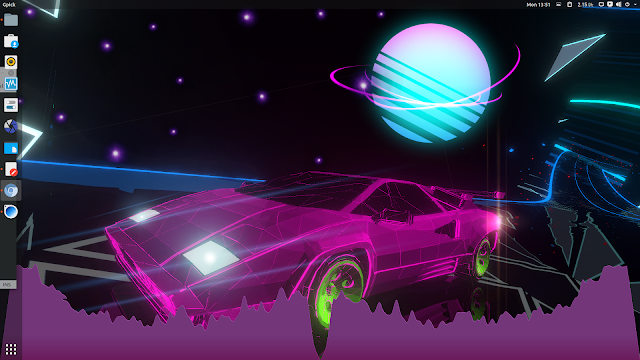Animate Your Wallpaper With An Audio Visualizer Using GLava (1.6.0 Released)
GLava, an OpenGL audio spectrum visualizer for X11, had a new release yesterday which includes improvements like FIFO support, support for disabling shader passes through GLSL, along with other enhancements and bug fixes.
GLava can be made to look as a live, animated wallpaper that's in sync with your music. While the application itself does not replace your current wallpaper, GLava can be made to appear as if it's embedded in your desktop background, so you can use it as a real-time audio visualizer on top of your favorite wallpaper. A video demonstration using multiple GLava instances can be seen here.
This is done by options in GLava that allow hiding the application borders, and to allow clicks throw the Glava window, making it behave like it's part of your desktop background.
Enhancements and bug fixes in GLava 1.6.0:
- Added FIFO support. Using this, you can use it with MDF's output for example, so GLava can display a visualizer that's independent from the sound volume.
- Added sampling modes for the GLSL smoothing pass to allow for more accurate output.
- Added support for disabling shader passes through GLSL
- Enhanced rendering and options for graph, like joining the audio channels together, and anti-aliasing the borders of the graph. Use
#define ANTI_ALIAS 1in thegraph.glslconfiguration file to enable anti-aliasing. This requiresxroottransparency to be enabled since it relies on alpha blending with the background. To join two channels together in the middle, use#define JOIN_CHANNELS 1in thegraph.glslconfiguration file - Fixed click-through the GLava window on Openbox (and potentially other window managers)
- Fixed the two lowest-frequency bars having the same value while running the bars module
- Fixed some build issues on Ubuntu
- Fixed a bug with circle that only manifested on some integrated graphics chips
Installing and configuring GLava
See the official GLava installation (Arch Linux, NixOS and openSUSE packages or from source) and configuration.
You may also want to check out the Linux Uprising article on GLava, which includes Ubuntu, Linux Mint and Fedora installation instructions (PPA / Copr) and an easy to follow configuration guide. I use GLava myself, and I maintain it in the Linux Uprising Apps PPA, which I just updated with the latest GLava 1.6.0.








